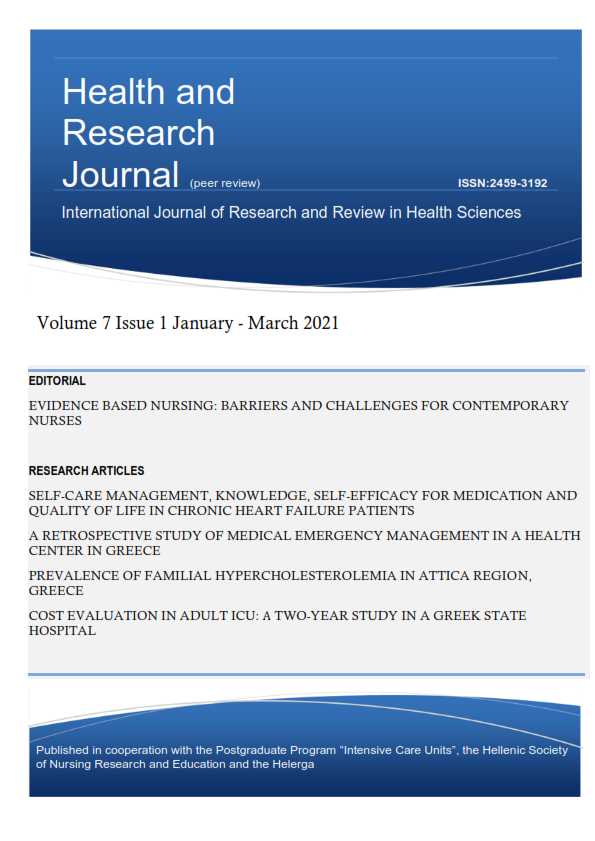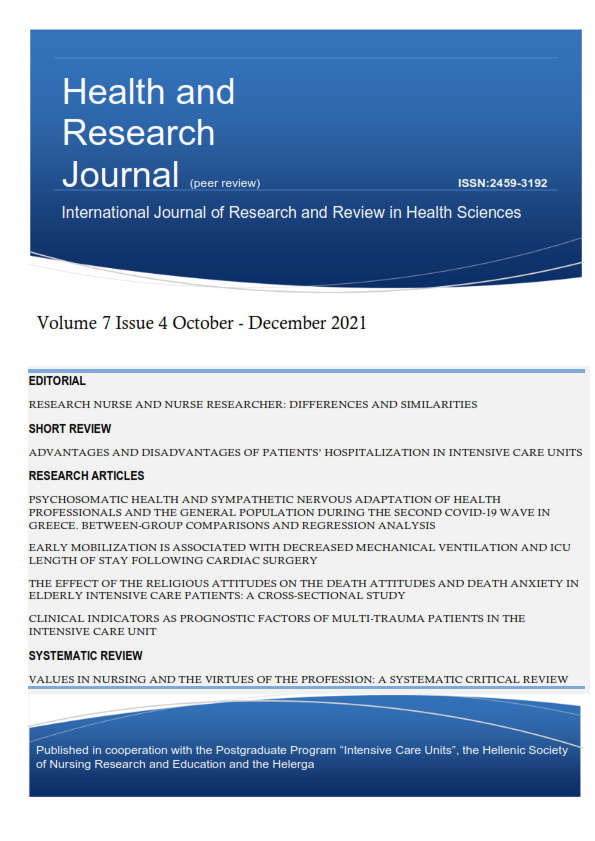Cost evaluation in adult ICU: α two-year study in a Greek State Hospital

Abstract
Background: During the last decades the combination of international economic and healthcare crisis has led to pressure on healthcare systems and has made financial evaluations particularly important.
Aim: To measure the total cost in ICUs, to analyze its components, and their changes during the study period.
Method and Material: All cost components in four cost categories (direct-variable, direct-fixed, indirect-variable, and indirect-fixed) of all patients admitted in a 6-bed mixed type adult ICU in a general (non-university) hospital of northern Greece in two consecutive periods, with total duration 2 years was measured. The direct-variable cost (medications, consumables, and diagnostic tests) was assessed with bottom-up (micro-costing) method while for the cost components of rest three categories the top-down (attributable costing) was used.
Results: In a 331 patients’ sample with 2823 total patient days, the sum cost was 2,417,788€ (1,370,420€ and 1,047,368€ in 1st and 2nd period respectively). The direct variable cost was 897,866.07€ (37.14%), the direct-fixed 1,049,068.6€ (43.39%), the indirect-variable 45,210.6€ (1.87%), and the indirect-fixed 425,643.0€ (17.60%). The mean daily cost per patient was 835.62€ and 885.35€, and the total cost per patient was 7,967.6€ and 6,587.2€ in the two periods of study respectively. The total cost of all non-survivors’ patients (N=85, 25.7%) was 595,009.1€ and the efficiency cost per survivor 9,828.4€. The mean daily cost and the total cost per survivor was 840.8€ and 7,409.7€ while for non-survivors was και 908.4€ and 7,000.1€ respectively. During the second study period, a reduction in total costs was observed and especially in direct-variable category attributed mainly to the prices of medicines consumables, and staff gradual costs reductions.
Conclusions: Changes in cost categories vary over time due to social and financial factors while the variables as the ICU environment or patient’s characteristics as severity of disease are the main cost drivers. Monitoring and recording of cost components variance would help with valuable information to healthcare managers, doctors, or nursing leaders. Extending this study with a multicenter to more ICUs could provide clearer conclusions about cost variability.
Article Details
- How to Cite
-
Kosmidis, D., Koutsouki, S., Lampiri, K., Nagy, E. O., Anastassopoulos, G., Papaioannou, V., & Pnevmatikos, I. (2021). Cost evaluation in adult ICU: α two-year study in a Greek State Hospital. Health & Research Journal, 7(1), 39–54. https://doi.org/10.12681/healthresj.26097
- Section
- Original Articles
Copyright notice:
The journal "Health and Research Journal" reserves the rights for copyright of the content of the website and also the copyright of the articles published.
By virtue of their appearance in this journal, the articles are free to be used for non-commercial purposes. However, the articles cannot and must not be used in anyway, published elsewhere or modified without any reference to the author and the first publication of the article.




